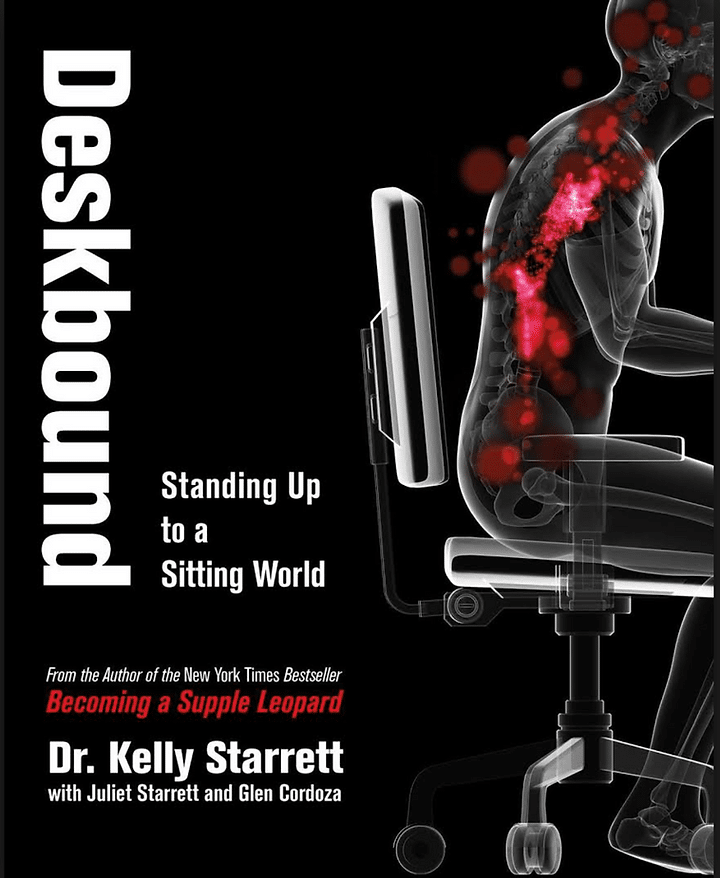
You may have heard the phrase lately that “sitting is the new smoking”. This phrase was coined by Dr. James Levine, the director of the Mayo Clinic – Arizona State University Obesity Solutions Initiative. Dr. Levine also states that “Sitting is more dangerous than smoking, kills more people than HIV and is more treacherous than parachuting”. Dr. Levine is not alone in these dramatic statements though and increasing amounts of research are demonstrating the negative effects of long-term sitting. I have recently started reading “Desk Bound” by Dr. Kelly Starrett, who is a Physical Therapist, coach, author and creator of the Mobility WOD blog. He focuses on performance-based Orthopedic Sports Medicine with an emphasis on returning athletes to elite level sport and performance. In “Desk Bound” Dr. Starrett discusses the negative impacts of sitting but also gives ideas of how to prevent and solve the problems associated with too much sitting. Please continue reading for a very brief overview of his guidelines. If you are looking to do something important for your body and health though, I highly recommend purchasing and reading this book. You will not regret it!!
So why is sitting so bad for you? Studies are showing that exercising and other healthy habits are unable to reverse the impacts of sitting. Even if you exercise for an hour per day, the sitting you do during your work day and throughout the rest of your day still makes you a sedentary person. Sedentary lifestyles are related to chronic conditions such as obesity, diabetes and heart disease which are overwhelming our health care systems. Although our bodies are extremely intelligent, they adapt to the positions you spend time in. For example, when you sit your neck, back and shoulders round forward while your hips are in a flexed/bent position. This results in changes to your muscles and joints which makes it difficult to move into optimal postures further affecting your movement mechanics when you do move or exercise. As Dr. Starrett says “What people fail to realize is that the positions we assume for most of the day impact the ways we move the rest of the day. And the quality of our movement (or lack thereof) can affect the quality of our lives”. Due to the increased incidence of sitting people are experiencing more pain that is posture related, including back, neck and shoulder pain. The US National Institutes of Health states that back pain affects eight out of ten people in their lifetime and in the United States alone almost one billion dollars is spent per year in treating back pain.
Unfortunately many people do not have a choice but to sit for a large portion of their day while at work. So what can we do to fight against the negative impacts of sitting? One huge thing is trying to reduce optional sitting during your day. If possible try transitioning to a standing work station/desk. Also try to reduce sitting in your leisure activities. Instead of sitting on your couch to watch television try sitting on the floor instead; this way you are more likely to move in/out of a variety of positions and can try squatting, stretching and working on your mobility as you watch your favourite show. For every 30 minutes you are forced to sit during the day, take a short two minute movement break. Try walking around your office, to the bathroom, or even doing a few stretches or body weight movements such as squats. Throughout the day, not just when you are exercising, try to optimize your posture and movement mechanics. Think of gently pulling your shoulders back to open through your chest and elongate through your spine. Lastly, in Desk Bound Dr. Starrett recommends spending at least 10 to 15 minutes performing daily maintenance on your body. Please check out his book for recommendations of mobility prescriptions to add to your daily routines to combat the negative impacts of sitting.
At Deep we have created exercises classes that not only build strength but also prevent injury. Our Functional movement circuit training and Seniors functional movement class address issues of prolonged sitting as well as injury prevention. Pilates and Yoga are both amazing exercise classes that strengthen posture, maintain and improve flexibility and build core stability and strength. If you are experiencing pain that you think may be related to your posture and sitting, please contact Deep Physio to schedule a physiotherapy assessment or ask about our above classes to help address these issues!

